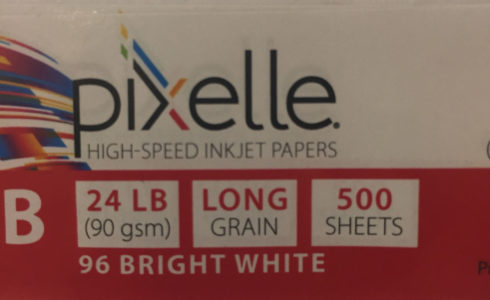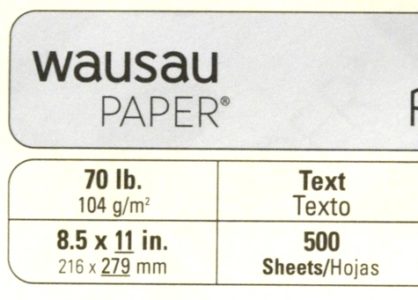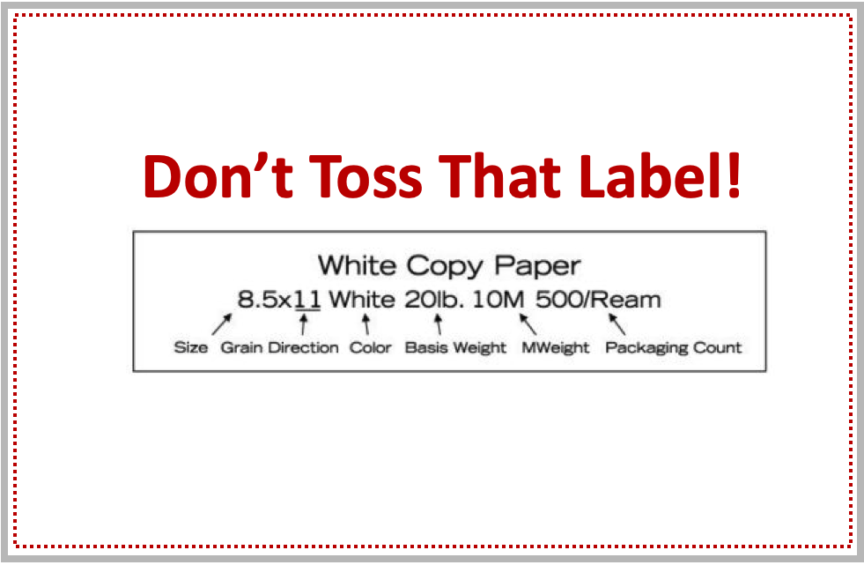Those of us coming from the web print market know that the TAPPI roll label is a very important item to review and retain, but did you know the label on cut sheet reams and cartons holds the same valuable information?

2-Sides of Paper
Since most paper mills in the United States use paper machines with a single-wire process to form uncoated paper, each side of the sheet has a wire or felt side pattern. This results in “two-sidedness” or differences in the sheet surface from one side to the other. If the paper sides are too different, color and print quality between paper sides will be visually different. It is important to know which side will print best using inkjet technology.
Finding the Better Print Side
The wire side contains less fines, fillers, and sizing than the felt side. The paper grain is also more pronounced on the wire side and is somewhat stronger than the felt side. With more pronounced paper grain, the wire side is the preferred side for heavier inkjet coverage, reduced mottle in solid images and finishing folds.
The felt side formation, containing more fines, fillers and sizing, can have a wilder formation than the wire and create a more prominent pattern which can leave inkjet solids with a splotchy, mottled appearance.
Normally the felt side of the paper faces up within a ream when the label is right-reading. Don’t be afraid to flip the paper to see if printing on the opposite side lends better print results.
Paper Curl
The paper making process can also determine the natural curl to the paper. Paper is made from wood and will contain long and short grains. How the grain fibers are arranged determines the “grain direction”, being parallel to the long or short dimension of the paper.
Long grain paper is better suited for the aqueous inkjet process if the long dimension of the paper is fed in the process direction. With inkjet using a high volume of moisture, feeding paper in the long grain direction reduces paper curl resulting from paper being saturated with ink and dried quickly. Reducing curl also reduces the chance of paper jams and other production issues.
Determine Grain Direction
If you are using a quality paper, qualified for your particular inkjet device, the ream label will note the grain direction.

LONG GRAIN noted is parallel to the paper’s length
If it is not specifically called out, the second number in the paper’s dimension indicates the grain. The long grain can also be identified by the paper dimension which is underlined on the ream label (see below).

Image represents 11″ dimension is long grain
Save Your Labels
Now that you have figured out the best print side for your production job and grain direction for paper feeds and finishing, be sure to retain the ream and carton labels used for the production job. If experiencing any unintended jams or print issues now or for comparing future job production, the label is a great communication tool to have when discussing with your paper provider.
Stay productive my friends.
Was this helpful? You may also want to check out “Understanding the TAPPI Roll Label” and please take a moment to complete our very brief survey on satisfaction with inkjet paper qualification data. Really quick, we promise!



